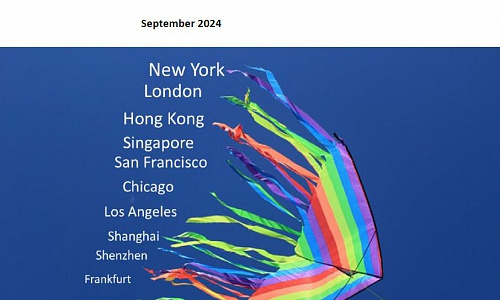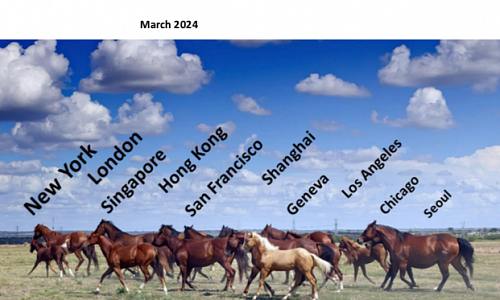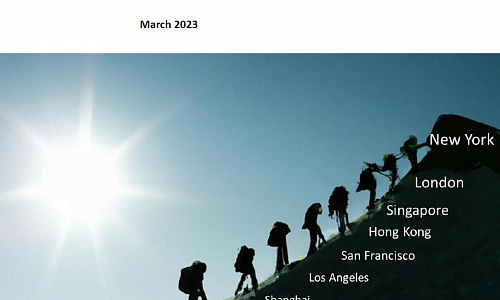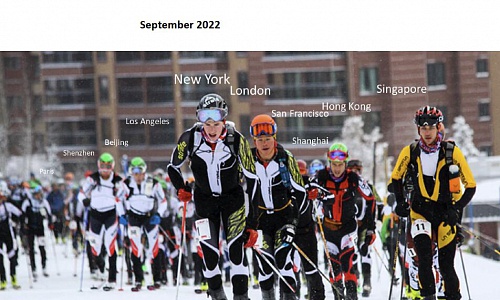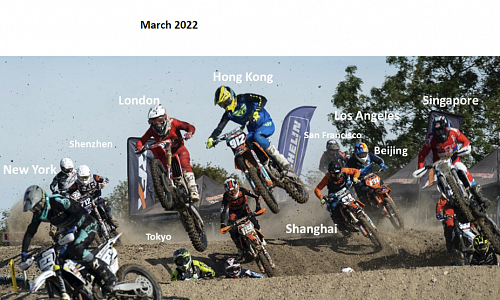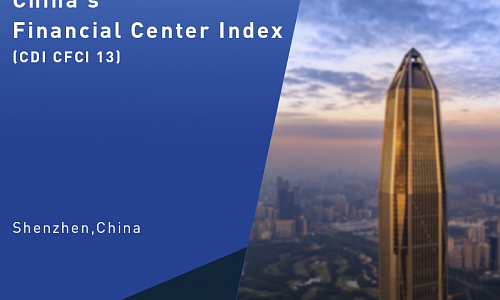
2017 - Macro Outlook
 Growth remained stable in November, with industrial output up 6.1% y/y. Fixed asset investment excluding agriculture was up 6.3% y/y, up 0.5 pps from October, and up 2.4 pps from its August nadir. However, the current investment growth rate is still lower than investment goods’ price growth rate, indicating that real investment growth is still negative, by -0.2% y/y.
Growth remained stable in November, with industrial output up 6.1% y/y. Fixed asset investment excluding agriculture was up 6.3% y/y, up 0.5 pps from October, and up 2.4 pps from its August nadir. However, the current investment growth rate is still lower than investment goods’ price growth rate, indicating that real investment growth is still negative, by -0.2% y/y.
National fiscal revenue fell -1.4% y/y, turning negative for the first time this year. Since current investment strength is mainly government driven, the fall of fiscal revenue will constrain a possible investment rebound. Retail sales of consumer goods were up 10.2% y/y in nominal terms in November, the same rate as in Q3. The consumption indicator is always very stable. The ex-factory price index of industrial output was up 5.8% y/y in November, and PPI was up 7.1% y/y, down 1.1 and 1.3 pps respectively from October, indicating that price appreciation since August represents only a temporary rebound.
M1 was up 12.7% y/y by the end of November, down 0.3 pps from the end of October, showing a consecutive downward trend. Deposits from non-financial enterprises rose 11.9% y/y, down 0.5 pps from the end of October. M2 rose 9.1% y/y, slightly higher than the lowest level, up 0.3 pps from the end of October, mainly affected by large increases from fiscal deposits and non-bank financial institution deposits.
Exports were up 12.3% y/y in November in dollar terms, and up 5.4 pps from October, outstripping the fastest growth rate of Q2. But we believe the fast export growth rate is likely an outlier.
Imports maintained their strong growth, up 17.7% y/y, and up 3.1 pps from Q3. Even conservatively speaking, we expect China to surpass the United States as the world’s largest importer in 2022. Consumption demand as a rising share of import increase will be a key opportunity for investors. This is part of the effort made by current Chinese leaders to further integrate with the rest of the world, and to curb China’s external imbalance, with such initiatives as the Road and Belt, and AIIB. China will also hold its first annual national “import expo” in 2018. By contrast, U.S. President Donald Trump seems to be moving in the opposite direction, most recently seen as threatening to withdraw foreign aid, simply because countries do not support his decision to recognize Jerusalem as Israel’s capital. Any withdrawal by the United States will give China room to expand its role in world trade.
 Growth was relatively stable in October. Industrial output was up 6.2% y/y, almost the same as in previous months. Yet key growth drivers weakened. Fixed asset investment was up 5.8% y/y, slightly above the nadir, but lower than the investment price level. So real investment growth is still negative, a key challenge for the future.
Growth was relatively stable in October. Industrial output was up 6.2% y/y, almost the same as in previous months. Yet key growth drivers weakened. Fixed asset investment was up 5.8% y/y, slightly above the nadir, but lower than the investment price level. So real investment growth is still negative, a key challenge for the future.
Retail sales of consumer goods were up 10% y/y in nominal terms, and 8.6% y/y in real terms. Both were the weakest growth figures of the year. Exports were up 6.9% y/y, declining from Q1 and Q2. We expect exports to continue to slide. Furthermore, the growth rate of industrial export delivery value could dip below zero next year. Imports were up 17.2% y/y, maintaining their fast growth trend, up 2.6 pps from Q3.
Producer prices continue to appreciate. The ex-factory price index of industrial output was up 6.9% y/y, and PPI was up 8.4% y/y. They grew 0.7% and 0.9% m/m, respectively. Among the composition of industrial output prices, industrial processing prices were up 7.6% y/y, a new high.
CPI was up 1.9% y/y, a slight increase, though stable from previous months. By the end of October, M2 was up 8.8% y/y, a new low, reflecting a continuation of monetary tightening.
There have been three major changes to financial regulations. On November 10th, it was announced that the government would relax or eliminate ownership limits in commercial banking, securities, futures, asset management and insurance. The same day, a cabinet-level financial stability committee was established, putting financial stability in an unprecedentedly high position. On November 19th, the Central Bank, together with all other financial regulatory bodies, issued a new guideline to more strictly regulate the asset management businesses.
Financial openness can increase the efficiency of capital allocation domestically, and can further lift the real economy’s productivity, by at least increasing financial competition among financial institutions. The Chinese government has also learned from Western countries’ past financial crisis history, by making financial stability a higher priority, since openness and liberalization are usually accompanied by instability. We view this openness with a prudential regulatory approach as a very positive direction.
 Growth in Q3 was stable, though slightly lower. GDP was up 6.8% y/y, down 0.1 pps from Q2. Industrial output rose 6.3% y/y, down 0.5 pps from Q2, but still higher than in Q3 2016. However, industrial output in real terms might be worse than official statistics indicate.
Growth in Q3 was stable, though slightly lower. GDP was up 6.8% y/y, down 0.1 pps from Q2. Industrial output rose 6.3% y/y, down 0.5 pps from Q2, but still higher than in Q3 2016. However, industrial output in real terms might be worse than official statistics indicate.
Since the beginning of 2017, fixed asset investment has been weakening. It rose 9.2% y/y in Q1, then fell to 8.3% y/y in Q2, and fell further to 5.8% y/y in Q3. After taking out the price factor, fixed asset investment fell -0.6% y/y, down 5.1 pps from Q1. But the good news is that paid-in investment funds rose by a relatively large 6.7% y/y. In Q3, the real estate market quickly cooled. The sales area grew only 1.2% y/y, down 12.8 pps from Q2. Sales revenue rose 3.9% y/y, down 15.4 pps from Q2.
Retail sales of social consumption goods were up 10.3% y/y in Q3 in nominal terms, and up 9.2% y/y in real terms, both down 0.5 pps from Q2. Total imports rose 14.6% y/y, flat on Q2, still a fast-growing trend. We expect imports will continue to rise. Exports rose 6.9% y/y, down 2.3 pps from Q2.
Producer prices continue to appreciate. The ex-factory price index of industrial products rose 6.9% y/y, up 1.4 pps from June. PPI rose 8.5% y/y, up 1.2 pps from June. At the end of September, the M2 money supply rose 9.2% y/y, down 0.2 pps from June. M1 rose 14% y/y, down 1 pps from June.
China’s Communist Party held its 19th National Congress this week, where it elected its new leadership and set its main policy themes for the next five years. President Xi Jinping will remain in his post, indicating a continuation of the current policy line. This announcement has significantly reduced policy uncertainty. In his report, Xi said the next five years’ main themes would be openness, entrepreneurship and resolving inequality.
Further openness is not only an extension of Belt and Road program, but also means further welcoming FDI and financial liberalization. These areas are viewed among economists as priorities for development. Entrepreneurship is for productivity growth, which is expected to be the key growth driver, rather than investment. Inequality is a primary issue for political stability in China. The government report specifically mentions IT. The extensive use of IT may have positive implications for the economy, as IT not only improves efficiency, but also may empower the central government. It can deliver sufficient information and monitoring ability for the conduct of government policy, and lead to better policy outcomes. We are positive on China’s future growth, given the government’s objectives -- but of course we need to watch closely, to see how these objectives will be implemented.
 Growth weakened in August. Industrial output was up 6% y/y, down 0.4 pps from July, and down 0.9 pps from Q2, which represented its lowest level of the year. Fixed asset investment, up 4.9%, was likewise at its lowest level of the year, down 3.4 pps from Q2.
Growth weakened in August. Industrial output was up 6% y/y, down 0.4 pps from July, and down 0.9 pps from Q2, which represented its lowest level of the year. Fixed asset investment, up 4.9%, was likewise at its lowest level of the year, down 3.4 pps from Q2.
But the ex-factory price index of industrial products rose 6.3% y/y, and was up 0.8 pps from July. PPI rose 7.7% y/y, up 0.7 pps from July. The producer price appreciation is hard to reconcile with weakening growth. We view economic fundamentals as sound, but macroeconomic uncertainty, especially driven by negative media reports, is slowing investment.
Retail sales of social consumption goods were up 8.9% y/y, down 0.7 pps from July, and down 0.8 pps from Q2. The weak retail sales can be partially explained by the crowding-out effect brought by booming housing prices. Exports were up 5.5% y/y, down 1.7 pps from July, and further down 3.7 pps from Q2. The RMB has appreciated against the dollar for four consecutive months since May, and was up more than 6%. Appreciation will negatively affect exports. Imports were up 13.2% y/y, down 0.7 pps from Q2, but will possibly increase further from RMB appreciation.
CPI was up 1.8% y/y, up 0.4 pps from July. Since we expect food price appreciation to increase further, CPI appreciation will continue as well. We expect CPI growth to exceed 2%, but be less than 2.5% y/y.
S&P Global Ratings on September 21st cut China’s sovereign credit rating for the first time since 1999, to A+ from AA-, citing the risks from soaring debt, and revised its outlook to stable from negative. We see this rating as overreaction, and misleading. Debt may not be a bad thing, especially when a country uses it to finance some long-term return projects, such as high-speed trains or urban subways, benefiting not only consumers but also firms, through market integration. We also agree with Chinese government officials’ response, that economic fundamentals are sound. Moreover, China’s external debt is small. All of these factors invalidate the claim of high risk.
 Growth remained generally stable in July. Industrial output was up 6.4% y/y, similar to previous months. But fixed asset investment, the key growth driver, climbed only 6.8% y/y in real terms, its lowest rate this year, and was down 1.5 pps from Q2. Its adjusted growth rate is less than 5%, which will pressure future growth.
Growth remained generally stable in July. Industrial output was up 6.4% y/y, similar to previous months. But fixed asset investment, the key growth driver, climbed only 6.8% y/y in real terms, its lowest rate this year, and was down 1.5 pps from Q2. Its adjusted growth rate is less than 5%, which will pressure future growth.
Real estate investment was hit by real estate market cooling, and was up just 4.7% y/y in July, down 3.4 pps from Q2. Imports were up 11% y/yy, down 3.2 pps. Import growth may even turn negative next year. Exports were up 7.2% y/y, down 2 pps from Q2. Retail sales of consumer goods have historically been less volatile, and were up 9.6% y/y in real terms in July, same rate as in June. CPI was slightly lower, up 1.4% y/y. But there are strong signs that vegetable, egg and pork prices will rebound, and CPI may rise to 2%. Producer price rises continued to slow. In July, ex-factory production prices rose 5.5% y/y, while PPI rose 7% y/y, down 0.3 pps from June.
Monetary policy in July continued falling back toward normal levels. M2 was up 9.2% y/y, down 2.1 pps from the end of 2016. M1 rose 15.3% y/y. Financial institutions’ estimated shadow banking investment increased 8.65 trillion yuan in 2016 alone, but decreased 845 billion yuan in Q2.
The National Financial Work Conference in July singled out prevention of financial risks as a top priority, including risks from outgoing investment. Chinese overseas M&A has often made major newspaper headlines in recent years, especially in 2016. After an August 18th session of the conference, the State Council gave detailed instructions about sectors where direct investment should be more restricted, and encouraged Chinese companies with M&A linked to real estate, hotels and entertainment, to be more cautious. This may reduce or even stop currently highly-leveraged corporations from investing. This initiative shows the government’s determination to rein in risk, and should prevent systemic financial risk.
 GDP rose 6.9% y/y in H1, up only 0.1 pps from Q4 2016. Industrial output rose 6.9% y/y, up 0.8 pps, and fixed asset investment rose 8.6%. But fixed asset investment’s real growth rate was just 3.8% y/y, down 5 pps from last year. Negatively affected by weak investment growth, we expect H2 growth to experience downward pressure. National household consumption spending rose 6.1% y/y, down 0.5 pps from H1 2016, reaching its lowest level since the creation of this measure in 2014. Retail sales of consumption goods rose 9.1% y/y in real terms, down 0.6 pps. Exports and imports are recovering, rising 8.5% and 18.9% y/y respectively, though both are still lower than in 2013 and 2014, and have much room for recovery.
GDP rose 6.9% y/y in H1, up only 0.1 pps from Q4 2016. Industrial output rose 6.9% y/y, up 0.8 pps, and fixed asset investment rose 8.6%. But fixed asset investment’s real growth rate was just 3.8% y/y, down 5 pps from last year. Negatively affected by weak investment growth, we expect H2 growth to experience downward pressure. National household consumption spending rose 6.1% y/y, down 0.5 pps from H1 2016, reaching its lowest level since the creation of this measure in 2014. Retail sales of consumption goods rose 9.1% y/y in real terms, down 0.6 pps. Exports and imports are recovering, rising 8.5% and 18.9% y/y respectively, though both are still lower than in 2013 and 2014, and have much room for recovery.
The ex-factory price index of industrial goods peaked in February, with a growth rate of 7.8% y/y, and then declined, to 5.5% y/y in June. Similarly, PPI topped out in March, with growth of 10% y/y, falling to 7.3% y/y in June. We expect prices to be low in H2, based on the current non-loosening monetary policy.
In H1, negatively affected by financial deleveraging policies, the main financial indicators point mostly to persistent falling growth. At the end of June, M2 rose 9.4% y/y, down 1.9 pps from the end of 2016, reaching a historical low. M1 rose 15% y/y, down dramatically from recent high levels, and down 6.4 pps from the end of 2016.
National government revenue and expenditure rose 9.8% and 15.8% y/y respectively, generating a fiscal deficit of 918 billion CNY, 2.5 times that of H1 2016, constraining further fiscal expansion.
China’s top leaders have gathered every five years since 1997 for a National Financial Work Conference. On July 16th, during this meeting, financial risk was the main topic. The most concrete decision to emerge from the meeting so far has been President Xi Jinping’s announcement of the creation of a cabinet-level committee to coordinate financial oversight. We consider China’s financial or debt risk containable. Compared with the United States before the 2008 financial crisis, the Chinese government has at least recognized its debt risk. High debt, in contrast to other countries, mostly concentrates on the corporate sector – on state-owned enterprises in particular. The Chinese government has a large direct say in SOE debt restructuring. The centralization of financial oversight agencies can help avoid regulators’ coordination failure, and regulatory capture. China’s relative high economic growth also promises to contain its debt over the medium term.

Growth is relatively stable but still facing downward pressure. The value added for major industrial firms up 6.5% y/y in May – flat on April, and slightly below that of Q1, but still higher than all quarters of 2016. But as the key to growth, fixed asset investment was up 7.9% y/y, decreased 1.3 pps from Q1 after showing decreased trend for two consecutive months. Although current investment growth is not at its lowest rate, the adjusted rate below all quarters of last year after factoring in last year’s low base number. We therefore expect some pressure on future aggregate growth.
M2 reached a record low in May. It rose 9.6% y/y, down 0.9 pps from April, and down 2.2 pps from last May. This is partially due to the deleveraging efforts by monetary policy makers, but it certainly will put pressure on growth. Retail sales of consumption goods were up 10.7% y/y in nominal terms, flat on April. In May, exports grew 8.7% y/y, up 0.7 pps from Q1. Imports rose 14.8% y/y, down 9.8 pps from Q1. Over the medium term, as growth rates for producer prices turn downward, imports will continue to weaken, and might even consequently lead an export slowdown.
CPI was up 1.5% y/y in May, appreciating for three consecutive months, and up 0.3 pps from April. The ex-factory price index rose 5.5% y/y, down 0.9 pps from April. PPI rose 8% y/y, down 1 pps from April. The downward trends of producer prices confirm our previous forecast, and we expect this trend to continue.
The China Foreign Exchange Trade System trading platform, overseen by the Central Bank, announced the introduction of "counter-cyclical factor” into its calculation method of yuan's daily reference rate on May 26th. This will allow it to better reflect supply and demand over the long term, and to partially counter the short-term exchange rate fluctuations. We believe that this change will avoid currency herding, leading to a more fundamentals-based exchange rate. The change will increase the stability of yuan, reducing uncertainties for investors and trading partners. Meanwhile, the size of the FX reserve seems to be stabilizing in recent months, even under current environment while the new round of Fed interest rate hikes. It may be safe enough to expect much less volatility in the RMB exchange rate, at least for the rest of this year.

GDP was up 6.9% y/y in Q1, its fastest growth since last year, and up 0.1 pps from Q4 2016. However, given the end of producer price appreciation, and real estate market re-tightening, we expect this recovery to be temporary.
Industrial output rose 6.8% y/y, up 0.7 pps from Q4. March saw a particularly strong spike, up 7.6% y/y, its highest rate since 2015. Fixed asset investment rose 9.2% y/y, up 1.4 pps from Q4, when adjusted growth was only 4.5% y/y, after factoring in the Q1 investment price boom, down 1.9 pps.
Retail sales of consumption goods rose 10% y/y in Q1 in nominal terms, down 0.6 pps from Q4. The real term growth rate was 8.8% y/y in Q1, down 0.3 pps. Trade is balancing in Q1, with the trade surplus falling -47.8% y/y, while exports grew 8.2% y/y. Imports grew 24% y/y, up 21.3 pps, mainly driven by producer price appreciation, reflected in the commodity goods imports climb.
CPI was up 0.9% y/y in March, down 1.2 pps from December 2016. The large drop came mainly in the food category. Food prices fell -4.4% y/y, down 6.8 pps from December. In March, the ex-factory price index for industrial goods rose 7.6% y/y, down 0.2 pps from February. PPI rose 10% y/y, up only 0.1 pps from February. These two m/m growth rates also show obvious declines. We expect both growth rates to decline further.
M1 and M2 were up 18.8% y/y and 10.6% y/y at the end of March, down 2.6 and 0.7 pps from last December respectively. Other major financial indicators are also weakening.
The CCP central committee and state council announced in an April 4th joint statement that they plan to build a massive new city outside Beijing. Xiong’an is to be “three times the size of New York, and aims to achieve the same importance as Shenzhen and Shanghai Pudong, the announcement said. Simultaneously, residential land availability in Beijing is to expand significantly. These two policies indicate that China’s new approach to controlling housing bubbles as people rush to big cities will be increasing land supply in large urban centers, and building satellite cities nearby, instead of prioritizing small-city development. We view this as a positive measure to alleviate housing price appreciation pressure, while dealing with excessive housing supply in small cities, more and more people are leaving as they migrate to large urban centers.
 On March 5th, Prime Minister Keqiang Li announced in an address to Congress that China was aiming for growth of about 6.5% for 2017 and CPI of about 3%. He also mentioned the government would continue to implement a proactive fiscal policy and to maintain a prudent neutral monetary policy, in particular, M2 growth rate targeting at 12% y/y for 2017.
On March 5th, Prime Minister Keqiang Li announced in an address to Congress that China was aiming for growth of about 6.5% for 2017 and CPI of about 3%. He also mentioned the government would continue to implement a proactive fiscal policy and to maintain a prudent neutral monetary policy, in particular, M2 growth rate targeting at 12% y/y for 2017.
Price inflations slowed down in January-February. CPI experienced a large fall, dragged down by falling food prices, and rose 1.7% y/y, down 0.5 pps from last Q4. Ex-factory price index of industrial products rose 7.8% y/y, PPI rose 9.9% y/y, down 1 and 1.1 pps from last December, lowering for two consecutive months. We view the CPI decrease to be transitory but producer prices will continue to grow slower than before under tightening monetary policy.
In January-February, industrial output increased 6.3% y/y, up 0.2 pps from last Q4. Fixed asset investment excluding agriculture rose 8.9% y/y, up 1.1 pps from last Q4, largely from higher producer prices. Retail sales of consumer goods rose 9.5% y/y in nominal terms in January-February, down 0.9 pps from last quarter, and rose 8.1% y/y in real terms, down 1.1 pps and 1 pps respectively from last quarter. Imports in January-February rose 26.4% y/y, up starkly 23.7 pps from last Q4. Imports from developed countries also surged, possibly reflecting Chinese consumers’ higher quality demands. Exports were stabile as usual, growing at around 4% y/y.
In February, monetary policy continued its tightening. M1 rose 21.4% y/y, and grew around 20% y/y after canceling the Spring Festival effect, 1.4 pps lower than last December. M2 rose 11.1% y/y, down 0.2 pps from last December. Market interest rate increased. For example, the interbank deposits from AAA rated banks with maturity of one year had a return of 3.01% on November 1st, 2016, but rose to 4.18% in this March, up more 1 pps. The heightened market interest rate has negative effects on corporate financing. Net financing from corporate bond grew negatively for three consecutive months.
According to National Bureau of Statistics, real estate prices in China’s major cities rose around 50% y/y in the year of 2016. Property sales by area still rose 25.1% y/y in January-February. Local governments are now taking further steps to stabilize housing market by strengthening their cities’ housing purchase restrictions. We view there might be some corrections in China’s “first tier” large cities such as Beijing, Shanghai, and Shenzhen, but prices in second tier cities, mostly key provincial capitals, may remain to be sable, while small cities and towns in vast countryside (not those towns nearby large metropolitan areas) may continue to fall slightly in 2017. Our judgment is based on China’s sound GDP growth rate and top tier cities’ superior public goods provisions.
 Due to Chinese New Year, many statistics are still not available, making our analytical task more difficult. But one notable policy change is that monetary policy reversed its 2016 loosening trend, and shifted into tightening. We also expect this to be the trend for 2017. M1 rose 14.5% y/y, continuing the declining trend it began in August, decreasing 1 pps per month on average, and rising 20% y/y, after correcting for the New Year’s holiday effect. M2 rose 11.3% y/y, its lowest level since last year.
Due to Chinese New Year, many statistics are still not available, making our analytical task more difficult. But one notable policy change is that monetary policy reversed its 2016 loosening trend, and shifted into tightening. We also expect this to be the trend for 2017. M1 rose 14.5% y/y, continuing the declining trend it began in August, decreasing 1 pps per month on average, and rising 20% y/y, after correcting for the New Year’s holiday effect. M2 rose 11.3% y/y, its lowest level since last year.
Loan growth has hit a new low. Chinese yuan loans from financial institutions rose 12.6% y/y, down 2.7 pps from last January, and their lowest growth rate since June 2005. Deposits from non-financial enterprises rose 11% y/y, showing a deleveraging trend since November. Imports jumped 16.7% y/y, and were up 14 pps from Q4 2016 in January, Exports improved less, rising 7.9% y/y.
CPI rose 2.5% y/y in January or 2.3% y/y after correcting for the New Year’s effect, slightly higher than last month. Producer prices continued rising. PPI rose a rapid 6.9% y/y, and 0.8% m/m, up 1.4 pps from last December. We expect PPI to match its last peak of 7.5% y/y, seen in July 2011.
The CEEM-PMI (an abbreviation for the China External Environment Monitor PMI), an external PMI indicator recently developed by the China Academy of Social Sciences, measures China’s external economic environment. It recently rose to 53.6, above the 50 threshold, mostly in line with, but better than, the two general PMI indices, NBS PMI and HSBC PMI, which were at 51.3 and 51 respectively. While the latter two figures indicate a general economic recovery for China, the CEEM-PMI signals possible improvement of external demand. The jump of the CEEM-PMI may be mainly driven by developed markets. For example, the new high value of U.S. PMI at 56 may be interpreted as a rebound from the previous overreaction to Trump-driven trade uncertainties.
More...
 GDP in 2016 rose 6.7% y/y, down 0.2 pps from 2015, reaching the lowest yearly level in China. The quarterly growth was highly stable, with first three quarters rising 6.7% and the fourth quarter rising 6.8%. In 2016, fixed asset investment rose 8.1%, down 1.9 pps from 2015. From the growth trend, it rose fastest in Q1, and grew 10.7% y/y, higher than Q3 and Q4 in 2015. The other three quarters displayed slower growth rates.
GDP in 2016 rose 6.7% y/y, down 0.2 pps from 2015, reaching the lowest yearly level in China. The quarterly growth was highly stable, with first three quarters rising 6.7% and the fourth quarter rising 6.8%. In 2016, fixed asset investment rose 8.1%, down 1.9 pps from 2015. From the growth trend, it rose fastest in Q1, and grew 10.7% y/y, higher than Q3 and Q4 in 2015. The other three quarters displayed slower growth rates.
Ended on December 16, 2016, the most important meeting, the central economic workshop meeting, held by Chinese top leaders including the President and Prime Minister, states that the policies for 2017 will lean towards fiscal policy rather than monetary policy which has been loosened but effect was small. The meeting also states that housing is for living, not for speculation. We expect the housing market will cool down further and more cities will start to adopt real estate tax to beat speculation.
There was divergence between imports and exports in 2016. Total exports fell -7.7% y/y, down 4.9 pps from 2015. Instead, total imports fell -5.5% y/y, up 8.6 pps from 2015.
Producer prices have been recovering. Ex-factory price of industrial goods first turned positive growth from September in 2016, and quickly expanded to 5.5% y/y growth rate in December. PPI turned positive from October and rose 6.3% y/y eventually in December. We expect the rising producer prices will translate to higher CPI in 2017. Before July, M1 growth rate steadily increased, reaching growth rate of 25.4% y/y at its peak, but after that, M1 growth rate lowered continuously, and grew 21.4% y/y in December, and the m/m growth rate was negative after considering seasonal factors. We expect monetary policy will be neutral in 2017.
On January 27, 2017, the US newly elected president Donald J Trump stated to consider a 20% tariff on Mexican exports to US. Trump has been an advocate for trade protection during his campaign. China is definitely on the list of potential tariff increase or to be labeled as currency manipulator. However, we expect US will lose more from a potential US-China trade war. Chinese economy is more flexible and can substitute jobs with its large fiscal capability considering China’s low national debt. China also mainly plays the role of processing trade which means the negative impact will transfer to other economies. The financial market will react instantly to any trade friction and self-fulling amid the two largest economies’ conflict, which will eventually lead to resort to US dollar safe haven. A large appreciation of US dollar will hurt the US economy more.


